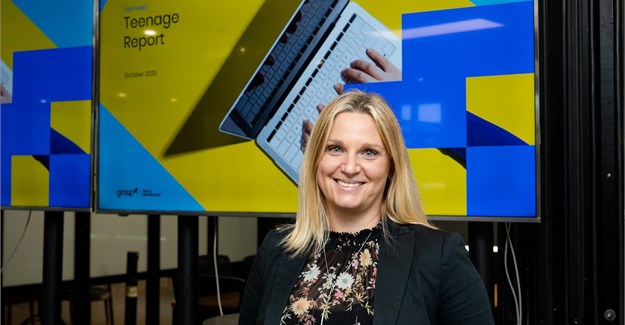16 OCT 2020
A new research study by GroupM agencies: Wavemaker, Mediacom and Mindshare, sheds light on the behaviour, attitude, media consumption usage and psyche of teenagers and delivers key insight into this under-researched, but important audience segment.

Said Delia Van Staden, head of analytics and insights at Wavemaker:
Teenagers are important to brands because they are early adopters and wield substantial purchasing power. Understanding this market and what makes them tick, can help marketers grow their brands and acquire life-long customers. As we all know, the youth, and in particular teenagers are the trendsetters of tomorrow.
In their short but eventful life, teenagers have grown up surrounded by the digital age, the consequences of a global recession, new-world terrorism and most recently, the novel coronavirus. Although greatly dependent on their parents, the external environment influences teenagers with regards to their media consumption, purchasing behaviour and attitude towards various brands. This influence continues well into adulthood.
GroupM agencies conducted an online research study, using their proprietary consumer panel, Live Panel, to unpack the opinions of 8 000+ teenagers (aged 13 – 17 years) across 18 global markets, of which South Africa was one. The sample size was split equally between girls and boys, and all the teenagers were recruited and interviewed under parental guidance using an online questionnaire.
The study identified seven personality archetypes. The archetypes were not mutually exclusive thus multiple personas could be found in the average teenager.
- Future Proofer’s focus on financial security; Confident Aspirers are already thinking about their careers and challenging themselves; Trendsetters lead the charge and are the first to try new things; Self-Assured Rebels are satisfied with their lives and confident in who they are; Virtual Virtuoso’s are highly savvy internet users; Content Addict’s love all forms of content and use it as a form of social currency, and finally Socially Aware Butterfly’s maintain an online social image that receives views and likes constantly.
“Data and insights are part of Wavemaker’s DNA, and these are used to underpin and inform decisions in media strategy at Wavemaker,” said Van Staden. “Having a rich data set like this enables us to understand the needs, motivations and driving forces in the SA teenage market – something which the industry and other agencies have been lacking for a long time now”.
535 of the 8,888 participants were from South Africa. While many similarities are seen across markets, South African teens are different on a few levels:
- Education is key to unlocking employment opportunities, with 70% saying they want to go to university, but the cost is worrying. Their desire for tertiary education is much more significant than the 48% global average and is the highest across all markets.
- Aspirations are driven by a desire for financial security with 83% agreeing that it is important to start saving money when young – significantly more than the global average at 70%. This is further validated by the fact that more South African teens save their money: 66% vs. 56% global average.
- They are fully aware of the value of money, making them extremely savvy shoppers who are always looking to maximise every penny spent. 53% said that they fully research a product before they buy it and 57% agreed that they don’t buy things spontaneously as they like to know more details first.
- Much has been said about teenagers NOT watching TV anymore, but our study doesn’t support this. In fact, 87% of teenagers state they watch TV daily, rising to 94% weekly, for approximately 2.2 hours per day. Furthermore, if we compare this with older age groups, we see that teenagers are watching TV more frequently versus adults aged 18-34 – probably due to them spending more time at home – and at a similar level to those aged 35-54.
- The digital world isn’t exciting to them: it’s a fundamental part of life and simply another space for them to hang out in. They crave this digital social connection, the ability to share their lives, thoughts and emotions with others in the moment, and to be constantly informed and updated about the lives of others. In fact, 75% would rather eat the same food for the rest of their life than be without social media.
- Social platforms provide a support network for teenagers emotionally. Interestingly, or worryingly, 46% say they find it easier to do emotional posts about their feelings than speak to people face-to-face. The potential negative impact of this on the future capability of teenagers to make strong personal connections, and on their mental health, has been widely reported.
This data allows marketers and planners alike, to further develop their targeted advertising to suit the up and coming consumer. Teenagers just cannot be grouped under the umbrella stereotypical term of “millennials.” The study shows that the teenage spectrum is of varying degrees and understanding these nuances goes a long way in communicating impactfully, something that is needed to stay in tune with tomorrow’s consumer. Teens are the gatekeepers of modern and future trends; thus, it is imperative that marketers cater to their needs.
This article was repurposed from Bizcommunity on 20 October 2020.

